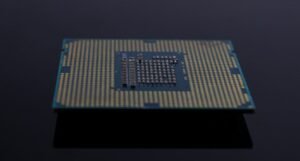Deep Learning and Types
Deep learning is a subfield of machine learning that focuses on artificial neural networks and algorithms inspired by the structure and function of the human brain. This approach allows machines to learn and make decisions without being explicitly programmed. Deep learning has revolutionized many industries, including healthcare, finance, and technology. In this article, we explore the different types of deep learning and how they are used in various applications.
Key Takeaways:
- Deep learning is a subfield of machine learning that uses artificial neural networks and algorithms inspired by the human brain.
- There are various types of deep learning, including convolutional neural networks (CNNs), recurrent neural networks (RNNs), and generative adversarial networks (GANs).
- CNNs are particularly useful for image recognition and computer vision tasks.
- RNNs excel at sequential data processing, such as natural language processing and speech recognition.
- GANs are capable of generating realistic data, which has applications in art, design, and data augmentation.
**Convolutional Neural Networks (CNNs)** are a type of deep learning algorithm particularly useful for image recognition and computer vision tasks. By using convolutional layers, these networks can automatically extract features from images and classify them into various classes. CNNs have been widely adopted in autonomous vehicles, facial recognition systems, and medical imaging analysis. *They can learn complex patterns from raw image data, enabling them to identify objects, people, and scenes with a high accuracy rate.*
Types of Deep Learning:
**Recurrent Neural Networks (RNNs)** are designed to process sequential data and maintain contextual information. Unlike feedforward networks, which flow information in one direction, RNNs have loops in their architecture, allowing them to retain information about earlier inputs. This makes them well-suited for tasks such as natural language processing and speech recognition. *RNNs can model the structure of sentences, generate novel text, and even compose music by learning from a given dataset.*
**Generative Adversarial Networks (GANs)** consist of two neural networks: a generator and a discriminator. The generator creates new data instances, while the discriminator evaluates the authenticity of the generated samples. This game-like interplay between the two networks helps the generator refine its outputs to make them more realistic. GANs have been used to generate images, videos, and even deepfake content. *They can also be used for data augmentation, where they generate new instances to expand a limited dataset.*
Below, we present three tables with interesting information and data points related to deep learning:
Table 1: Applications of CNNs
| Industry | Application |
|---|---|
| Healthcare | Medical image analysis |
| Automotive | Autonomous vehicle navigation |
| Security | Facial recognition systems |
Table 2: Use Cases for RNNs
| Application | Description |
|---|---|
| Natural Language Processing | Text generation, sentiment analysis |
| Speech Recognition | Voice-to-text, voice assistants |
| Stock Market Prediction | Time series analysis, forecasting |
Table 3: Examples of GAN Applications
| Domain | Use Case |
|---|---|
| Artificial Intelligence | Enhancing data generation for training AI models |
| Design | Creating original artworks and graphics |
| Entertainment | Creating deepfake videos and visual effects |
**In conclusion,** deep learning encompasses various types, each with its unique strengths and applications. Convolutional neural networks are ideal for image recognition and computer vision tasks, while recurrent neural networks excel at sequential data processing. Generative adversarial networks are capable of creating realistic data and have diverse applications. As deep learning continues to advance, it is expected to unlock new possibilities and fuel further innovations in artificial intelligence.

Common Misconceptions
1. Deep Learning is the same as Machine Learning
One common misconception people have is that Deep Learning and Machine Learning are synonymous terms. While both are subsets of artificial intelligence, they have distinct differences.
- Deep Learning focuses on building hierarchical neural networks to mimic the human brain’s structure.
- Machine Learning algorithms usually rely on predefined features to produce results.
- Deep Learning requires large amounts of labeled data and substantial computational power.
2. Deep Learning models are infallible
Another common misconception is that Deep Learning models are perfect and can give flawless results in any scenario. However, this is not the case.
- Deep Learning models are prone to overfitting, where they memorize the training data and fail to generalize well to new data.
- Models may be sensitive to changes in the input data or slight variations in the problem setting.
- Bias in the training data can lead to biased predictions from Deep Learning models.
3. Deep Learning can replace human intelligence
Some people believe that Deep Learning can fully replace human intelligence and decision-making. However, this is a misconception that stems from oversimplification of the capabilities of Deep Learning models.
- Deep Learning models lack understanding and reasoning abilities compared to human intelligence.
- They are limited to the knowledge learned from the training data and cannot generalize beyond that.
- Human intelligence involves complex cognitive processes that are not fully understood nor replicated by Deep Learning algorithms.
4. Deep Learning is only applicable to image and speech recognition
Many people associate Deep Learning solely with image and speech recognition tasks, assuming its applicability is limited to these domains. However, Deep Learning has far broader applications.
- Deep Learning can be used for natural language processing, including machine translation and sentiment analysis.
- It is widely applied in recommendation systems for personalized suggestions.
- Deep Learning has proven successful in areas such as medical diagnosis, autonomous vehicles, and finance.
5. You need a lot of labeled data for Deep Learning
Although Deep Learning often requires labeled data for supervised learning, it is a misconception to believe that massive amounts of labeled data are always necessary.
- Various unsupervised and semi-supervised learning techniques have been developed for Deep Learning, which can harness unlabeled or partially labeled data.
- Techniques like transfer learning can leverage pre-trained models and relatively smaller labeled datasets for effective results.
- Researchers are also actively exploring ways to improve Deep Learning techniques with limited labeled data.

Deep learning is a subset of machine learning that focuses on artificial neural networks and algorithms inspired by the structure and function of the human brain. It has revolutionized various fields, including computer vision, natural language processing, and speech recognition. This article explores different types and applications of deep learning, showcasing its impact and potential. The following tables provide interesting insights into the world of deep learning.
Deep Learning Frameworks
Deep learning frameworks are essential tools for implementing and executing deep learning algorithms efficiently. The table below showcases popular frameworks used in both research and industry.
| Framework | Year of Release | Primary Language | GitHub Stars* |
|---|---|---|---|
| TensorFlow | 2015 | Python | 157k |
| PyTorch | 2016 | Python | 50k |
| Keras | 2015 | Python | 49k |
| Caffe | 2013 | C++ | 31k |
*GitHub Stars refer to users’ endorsement and popularity of the framework on the GitHub platform.
Deep Learning Applications
Deep learning finds applications in various domains, ranging from autonomous vehicles to healthcare. The following table highlights the impressive use cases of deep learning across diverse fields.
| Application | Description | Impact |
|---|---|---|
| Image Recognition | Identifying objects, faces, and features in images. | Improves security systems, enables autonomous navigation. |
| Natural Language Processing | Understanding, interpreting, and generating human language. | Enhances chatbots, translation systems, and voice assistants. |
| Sentiment Analysis | Determining emotions and opinions from textual data. | Aids in brand reputation management, customer feedback analysis. |
| Anomaly Detection | Identifying unusual patterns or outliers in data. | Improves fraud detection, network security, and disease diagnosis. |
Neural Network Architectures
Neural network architectures define the structure and connections within deep learning models. The table below summarizes various popular architectures and their applications.
| Architecture | Description | Applications |
|---|---|---|
| Convolutional Neural Networks (CNN) | Specially designed for image analysis and recognition tasks. | Image classification, object detection, and semantic segmentation. |
| Recurrent Neural Networks (RNN) | Allow information to persist in the network through cyclic connections. | Speech recognition, language modeling, and time series forecasting. |
| Generative Adversarial Networks (GAN) | Pit two networks against each other to generate new content. | Image synthesis, texture generation, and data augmentation. |
| Transformers | Attend to different parts of input sequences, revolutionizing NLP. | Machine translation, question answering, and text generation. |
Deep Learning Algorithms
Deep learning algorithms form the backbone of deep neural network training. The table below presents some widely used algorithms and notable features.
| Algorithm | Description | Key Features |
|---|---|---|
| Backpropagation | Used to adjust the network’s weights during training. | Efficient error propagation, requires labeled training data. |
| Adam | An adaptive optimization algorithm with momentum. | Converges quickly, less sensitive to hyperparameter tuning. |
| Long Short-Term Memory (LSTM) | A variant of RNN designed to remember information for long durations. | Effective in capturing long-range dependencies, avoids vanishing gradient. |
| Generative Pre-trained Transformer (GPT) | Uses transformer architecture for unsupervised pre-training. | Produces high-quality text, facilitates transfer learning. |
Deep Learning Hardware
Deep learning models demand extensive computational resources, and specialized hardware has emerged to meet these requirements. The following table presents different hardware options utilized for deep learning tasks.
| Hardware | Description | FLOPs** |
|---|---|---|
| Graphics Processing Units (GPUs) | Parallel processors built for real-time graphics rendering. | 100 TFLOPs |
| Tensor Processing Units (TPUs) | Google-developed ASICs optimized for deep learning workloads. | 100+ PFLOPs |
| Field-Programmable Gate Arrays (FPGAs) | Reconfigurable chips that can be customized for specific tasks. | 1 TFLOP |
| Application-Specific Integrated Circuits (ASICs) | Tailor-made chips designed to perform deep learning operations. | 10+ TFLOPs |
**FLOPs (FLoating-point Operations Per Second) measures the computing performance of hardware, indicating the number of floating-point calculations it can perform per second.
Deep Learning Challenges
While deep learning has shown tremendous potential, it still faces certain challenges that researchers and practitioners strive to overcome. The following table highlights some prominent challenges in the field.
| Challenge | Description |
|---|---|
| Data Availability | Lack of labeled and high-quality training data for specific tasks. |
| Computational Resources | Demands significant computational power and memory for training. |
| Interpretability | Black-box nature of deep learning models hampers interpretability. |
| Adversarial Attacks | Deep learning models are vulnerable to algorithmic manipulation. |
Deep Learning in Healthcare
Deep learning has immense potential to revolutionize healthcare by improving diagnostics, treatment, and patient outcomes. The table below presents promising applications of deep learning in the medical domain.
| Application | Description | Impact |
|---|---|---|
| Medical Imaging Analysis | Automated analysis of medical images for diagnosis and detection. | Reduces interpretation errors, speeds up diagnosis, enables early detection. |
| Drug Discovery | Accelerating the process of discovering new drugs and treatments. | Improves efficiency, reduces costs, and identifies novel compounds. |
| Disease Prognosis | Predicting disease progression and patient survival rates. | Aids in treatment planning, helps allocate resources effectively. |
| Electronic Health Records (EHR) | Extracting insights and patterns from vast amounts of patient data. | Enables personalized medicine, improves decision-making. |
Deep Learning Trends
Deep learning is an evolving field, continuously advancing with new developments. The table below showcases some emerging trends that have the potential to shape the future of deep learning.
| Trend | Description |
|---|---|
| Federated Learning | Training models on decentralized data without compromising privacy. |
| Unsupervised Learning | Enabling models to learn patterns and structures autonomously. |
| Explainable AI | Improving interpretability and transparency of deep learning models. |
| Multi-modal Learning | Extracting information from multiple sources (e.g., text, images). |
Deep learning has transformed the fields of artificial intelligence, data analysis, and decision-making. With its wide range of applications, advancements in frameworks, architectures, algorithms, and hardware, it has reshaped the way machines perceive and learn from data. As deep learning continues to evolve, it holds profound potential for tackling complex problems and unlocking new possibilities across diverse domains.
Deep Learning and Types
Frequently Asked Questions
What is deep learning?
What are the different types of deep learning?
What is a convolutional neural network (CNN)?
How does a recurrent neural network (RNN) work?
What is a generative adversarial network (GAN)?
What is deep reinforcement learning (DRL)?
What are the applications of deep learning?
How is deep learning different from traditional machine learning?
What are the advantages of deep learning?
What are the challenges of deep learning?




